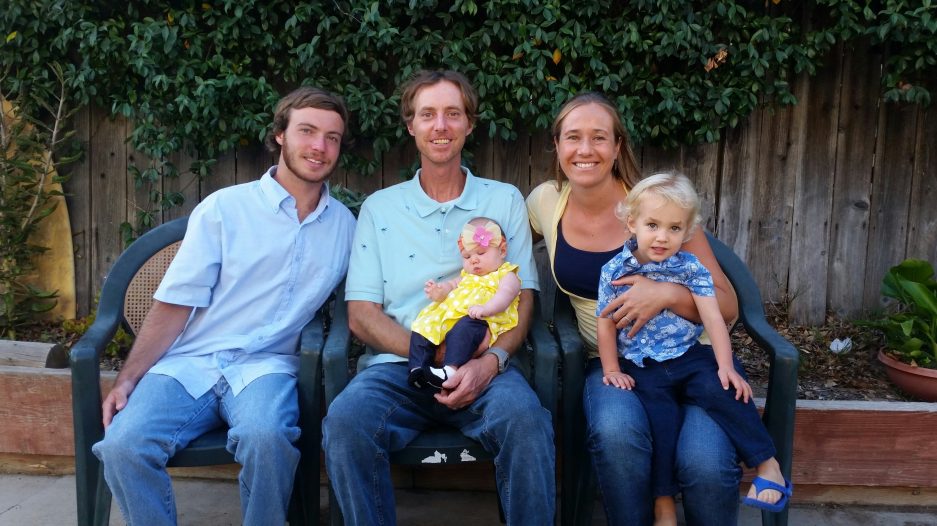(This is the second part of a series of posts leading up to Rare Disease Day on February 28th. I am covering different topics related to Coral and dup15q. Read part one here: Sensory Processing. Thanks for following along!)
On a recent Monday morning I walk into Coral’s room with her AAC device to get her out of bed for the day. An AAC device is one way she communicates. It is a tablet with a program (Proloquo 2 Go is the one Coral uses) that has been individually programmed for her. She pushes a button (with words and a picture), and the device says the word/phrase. There are enough words for her to talk about any and (almost) everything one day, even in complete sentences if she chooses.
I show her the device as I navigate into the “Chat” folder. I say, “Good morning,” as I push the button “Good morning.”
I then say, “I love you,” using just my words.
Before I can even use her device to say those same words, Coral quickly navigates into a folder and immediately tells me, “I love you.”
I pause and look again at her device screen to make sure I heard her correctly. At the top (where the words show up) is “I love you.”
I quickly respond (while hovering in a moment of pure bliss), “I love you, too, Coral.”
The day Coral was diagnosed with dup15q at three weeks old when she was in the NICU, I returned to my room at the Ronald McDonald House and collapsed in tears. I was given some scientific research articles (all with medicalized viewpoints about dup15q). I recaIl reading in those articles about many kids being nonverbal. In that moment, having a nonverbal child felt like a true tragedy. The end of the world. How can my child live a meaningful life if she can’t speak with words?
Fast forward 5.5 years and my views have changed completely. Coral communicates with us everyday in her own way. I now understand that she is not nonverbal (without words) but rather she is nonspoken. Receptively, Coral understands so many things we say. She probably understands even more than we realize. She is a true multimodal communicator. She takes our hand to take us to the things she wants. She brings us her toys for help. She uses the sign “more.” She has spoken some words at different times—jump, more, good, purple, orange, green. But her primary form of communication is her AAC device.
With her device, Coral has access to communicate her wants and needs. Like any language learner, she is learning how to speak this way one day at a time.
She also has access to just babble on her AAC device—a way to finally say all of the words that she knows but that are very challenging for her to speak with words. This has been awesome to watch. Everyday she navigates through different folders to find her favorite words to say, “Surprise, surprise, sleepover, sleepover, sleepover, school holiday, school holiday.”
I talk to her (using my words and her device) as she babbles. “You and Tate did have a sleepover last night. It’s not a school holiday today Coral.” (Coral actually loves school.)
She continues on, navigating into vehicles (another favorite topic of hers to talk about). She says, “Firetruck, firetruck, firetruck.”
“You do like firetrucks,” I comment.
When I sit back and watch Coral navigate through the words, I see how she has learned where they are through location and repetition. The location never changes. Her drink button will always be in the food folder and then right center. Many of her favorite and most used words she can navigate to without looking because she knows the location.
She is incredible. She is smart. She is a determined, persistent communicator who enjoys learning the language of her AAC device.
How far from the truth I was years ago (and how deeply flawed were my perceptions, stereotypes and expectations) when I lay there crying, thinking and questioning: If she can’t speak, she must not understand anything. If she doesn’t understand anything, how will we form a relationship with her and how will she be able do anything in her life?
Now I always presume competence. It can’t be only on Coral to demonstrate (in the terms acceptable to the non-disabled world) what she knows or what she needs. It’s on me (and the rest of society) to bend towards Coral—to step outside our comfortable and familiar forms of communication. We need to meet her where she’s at, to honor and respect her way of communicating by communicating WITH her on her AAC device. We need to be more present in the moment in order to identify her subtle (and not so subtle) signs of communication.
Giving Coral access to communicate opens one door to help her to more fully participate in life—to live her authentic life.
The other morning Tate and I went into her room.
We both said, “Good morning,” in our words and on her device.
Coral then purposefully and clearly told us, “No.”
Tate’s eyes got huge and he broke into a small chuckle and smile, surprised by her decisive response to our morning greetings.
I told her, “I’m sorry you aren’t having a good morning. I hope your day gets better.”
With 100 percent certainty Coral can and does communicate. All the time. And we will hear her, if we are open to truly listening.


One thought on “I Love You”